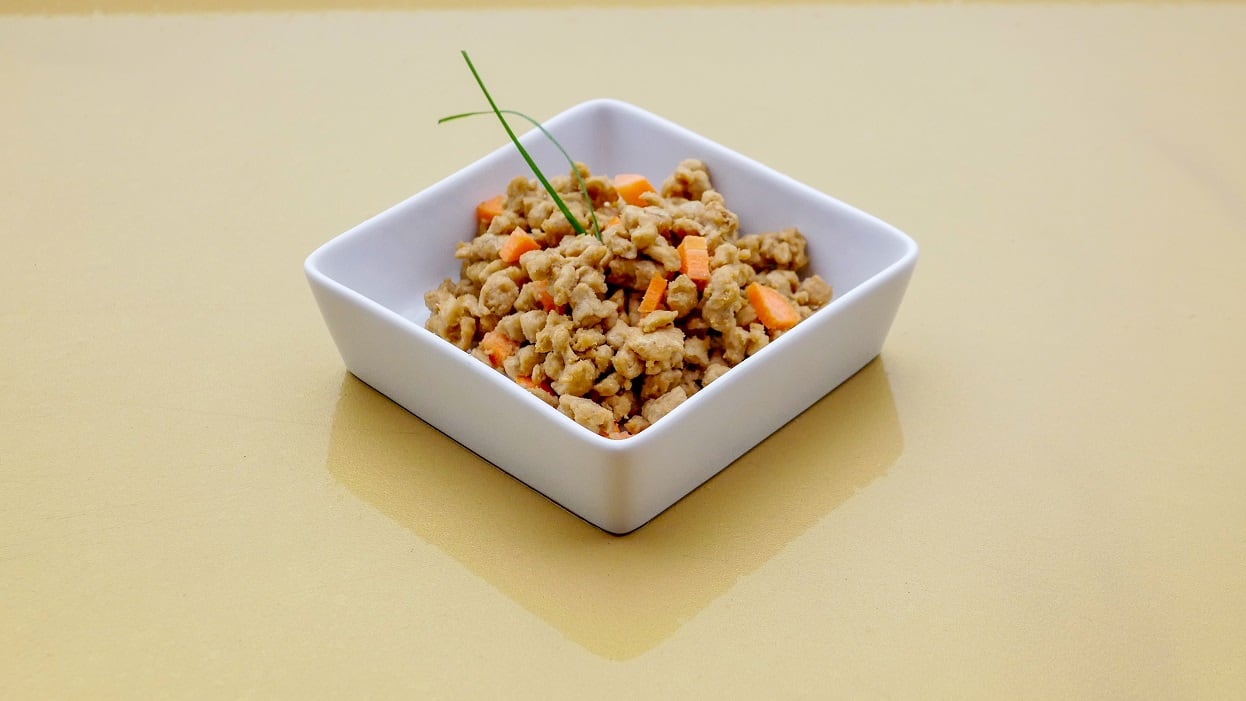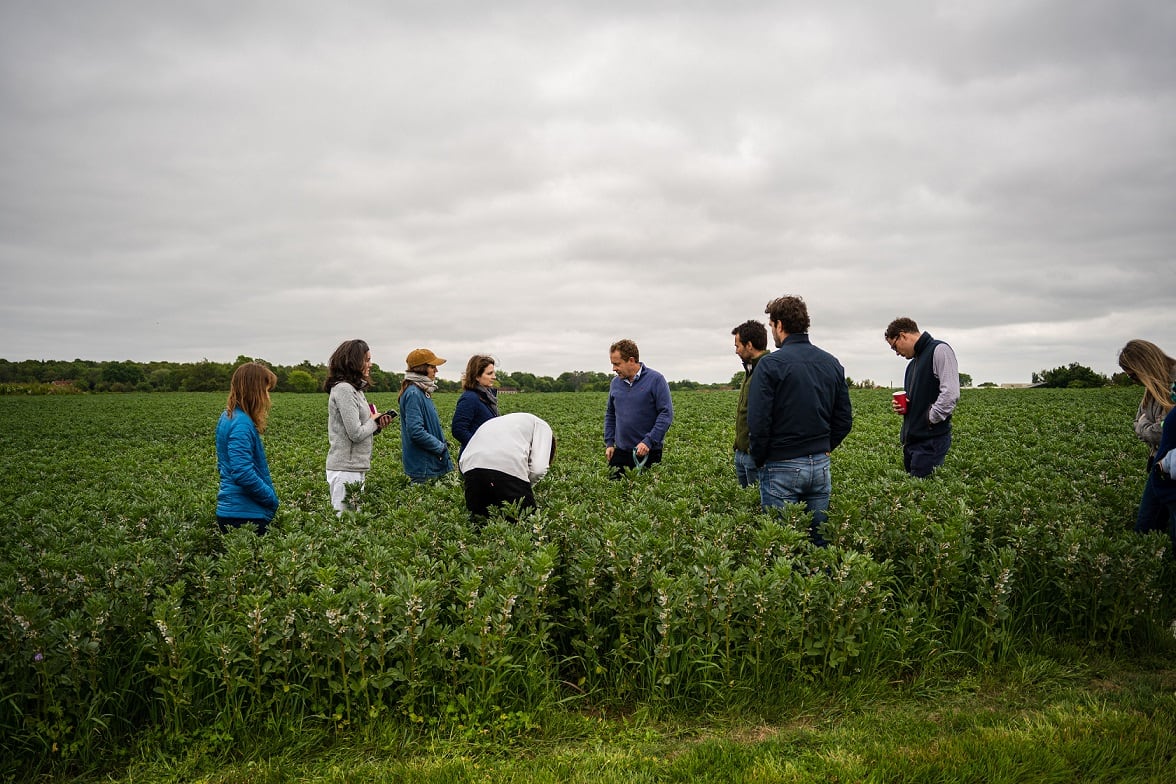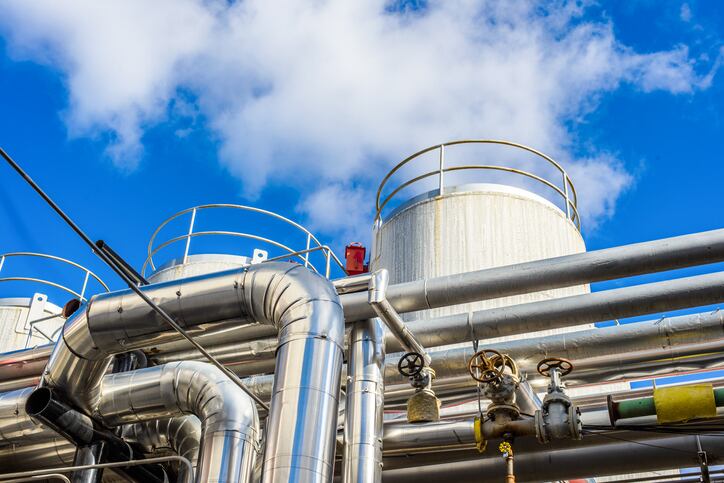Derived from stem cells, BioCraft says its chicken line is neither genetically modified nor immortalized. While it is common to license cell lines from third-party providers, the startup owns its cell lines; the chicken stem cell line is being derived by BioCraft’s in-house stem cell scientist and veterinarian, Rupal Tewari.
The startup says the cultured chicken ingredient contains all essential nutrients — including protein levels, key vitamins, fats and amino acids, such as taurine — typically found in traditional animal protein sources.
The female-founded company has a deep bench of scientists including Revo Foods cofounder, Theresa Rothenbücher. Its CEO is Dr Shannon Falconer. She gave us the low down on how a cultured meat industry, particularly one focused on pet food, can be a disruptive force.
While the startup is incorporated in the US, its operations are being run out of Austria. Dr Falconer is based in Vienna.
She decided to apply her biochemistry background to the concept of making meat-based pet food but growing that meat from animal cells in a bioreactor. “Our mission is to make a dent in terms of taking animals out of the supply chain.”
Regulatory pathway
In June, US regulators approved the sale of chicken made from animal cells for use in human foods. But no territory has approved cultivated meat as a pet food ingredient, yet.
In the US, the Centre for Veterinary Medicine (CVM), under the umbrella of the FDA, is charged with regulating the use of cultured meat for pet food.
“We have been communicating with the CVM. They have given us a clear path to market. As for next steps, we are working towards ensuring that we check all the boxes in terms of what they require. Compared to the EU regulatory authorities, the FDA is willing and open to have discussions prior to a company having a full scientific dossier ready to submit,” explained Dr Falconer.
In the EU, cultured meat is regarded as a novel food and therefore comes under the scope of European Food Safety Authority (EFSA) guidelines.
“Approvals will of course be company specific and will happen when our full process is down pat. Therefore, we need to have established a commercial manufacturing facility and we must scale into the appropriate size bioreactor. We are working on all those aspects so that we can demonstrate the entire process and provide the regulators with the full scientific dossier, and, at that point, we would move forward with review for approval.”
Meat slurry replacement
BioCraft meat is made from cells grown under process conditions inside a bioreactor. Key nutrients the animal cells produce include taurine, vitamin D3 and vitamin A.
“Some of those nutrients are retained within the cell or what we call the biomass as it is growing, and some are spit outside of the cell into the surrounding environment, which is a liquid that the cells are growing in. So, in the end, we are not only harvesting the biomass, but also the rich nutritional broth that surrounds those cells, everything from the bioreactor. Our final ingredient is actually similar in consistency to an ingredient the pet food industry routinely uses - meat slurry,” said Dr Falconer.
The remarkable thing about the slurry format, she said, is that it is one that pet food manufacturers are already familiar with, and it does not require any downstream processing.
The nutritional value of its slurry will be analyzed and confirmed by a third-party provider, she added.
While textural challenges plague companies working on cultured meat for human consumption, having pet food as its target market means BioCraft can bypass such concerns entirely as companion animals are less discerning when it comes to perfecting meat’s look, taste, and texture.
“In our system, there is no downstream processing, we don’t have to create our meat so that it looks like a steak, we are only concerned with the nutritional value of our product.”
Resource efficiency
Beyond that aspect, how resource efficient is cultured meat production compared to conventional meat production?
“Several peer reviewed papers show the electricity nets out to be roughly the same for cultured and slaughtered chicken, specifically,” said Dr Falconer.
A paper published in July last year determined that cultured meat has been assumed to be a sustainable and carbon-improved alternative to traditional meat, which could potentially lead to a 7–45% lower energy use, 78–96% reduced GHG footprint, 99% decreased land use and 82–96% decreased water use.
“Although the environmental impact of the cultured meat sector has recently been more critically reviewed, a thorough life-cycle analysis (LCA), based on an actual production process, has yet to be performed. A robust and reliable LCA is difficult to conduct at this stage, as there are still technical challenges and unknowns,” noted the authors.
The paper cited a study by Sinke & Odegard in 2021, in which those researchers used primary data from several cultured meat companies and concluded that cultured meat may have a better environmental impact over several conventionally produced meat types, resulting in less land use (for all meat types) and a lower carbon footprint (for beef, while being comparable to pork and chicken). They also concluded that a decreased carbon footprint could be achieved using renewables instead of conventional energy.
When asked why pet food manufacturers shouldn't just continue upcycling slaughterhouse by-products as ingredients in their formulations instead of switching to cultivated meat ingredients, Dr Falconer maintains that using such raw materials in this way is not resource efficient:
"By providing a revenue for a meat sector waste stream, the rendering industry is effectively [propping up] the low-margin animal production business, which is the most environmentally unsustainable industry that exists."
Economic viability
That July 2022 paper also identified medium-related costs as one of the main cost drivers for scalable cultured meat production. How can BioCraft ensure cost-effective ingredients?
“With respect to the unit economics of cultured meat for human consumption, it is not looking like we are going to see any massive dents any time soon. With pet food though, as we are creating a different product - we are not just harvesting the biomass, we are harvesting that entire nutritional blend – that factor makes our process far more scalable and economically viable.
“And our intention is to move large volumes.”
Pet food manufacturers of all sizes have expressed interest in the product, said the BioCraft lead.
“So rather than choosing to purchase rendered ingredients, they will increasingly purchase cultured meat ingredients for environmental reasons and for the fact we offer a more stable supply chain as animal feed and pet food ingredients supply is historically extremely volatile.”
Production
In terms of next steps, the company is starting to build up to its Series A.
“The money that comes in from that will go towards financing the infrastructure, and CapEx, for a first pilot-scale manufacturing facility. The location of that facility would ideally be in close proximity to our first customer so we can reduce our environmental footprint when it comes to shipping.”





